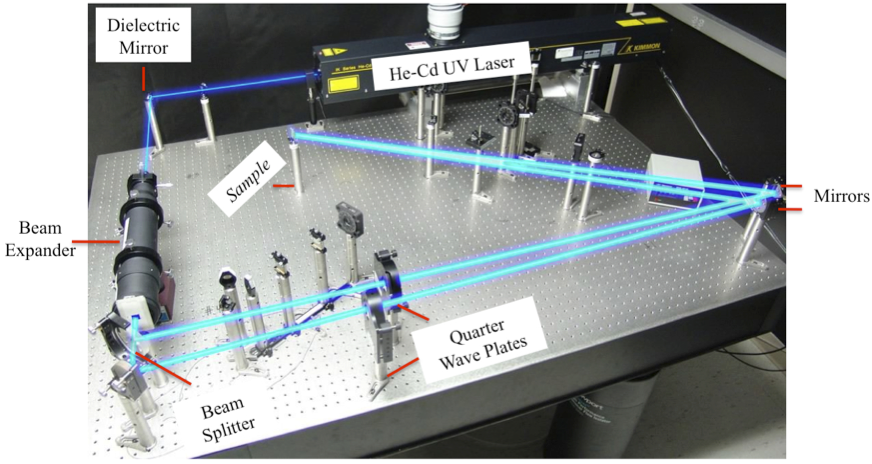One of the conventional approaches to create polarization gratings is to use polarization holography. We applied traditional approaches to make some very interesting optics in Liquid Crystal materials, using optical benches, optics, and lasers similar to the arrangement shown below. Typically, this "classic" configuration starts with a UV laser (He-Cd 325 nm shown below). Beam from this laser is typically a few mm wide, and is converted into a uniform gaussian beam about 1-2'' wide by a beam expander which is carefully aligned. Therafter, a beam splitter positioned properly splits this beam into two beams of nearly equal power which are redirected to a second set of mirrors. Two quarter-wave plates allow precise control of the polarization state of these two beams. The last set of mirrors control the angle of recording beams at the sample shown below. Various grating properties can be controlled by carefully controlling the different degrees of freedom offered by the individual optics in the system.

Alternative configurations such as Mach-Zehnder, Michelson interferometers can also be tailored to produce PGs. However they are still complicated compared to the elegant method described below. This risley prism approach is compact and allows recording angle to be tuned easily unlike the above approach.
I continue to investigate other approaches to mass produce PGs across large areas using partially coherent light sources such as LEDs, lamps since those are much cheaper than lasers.